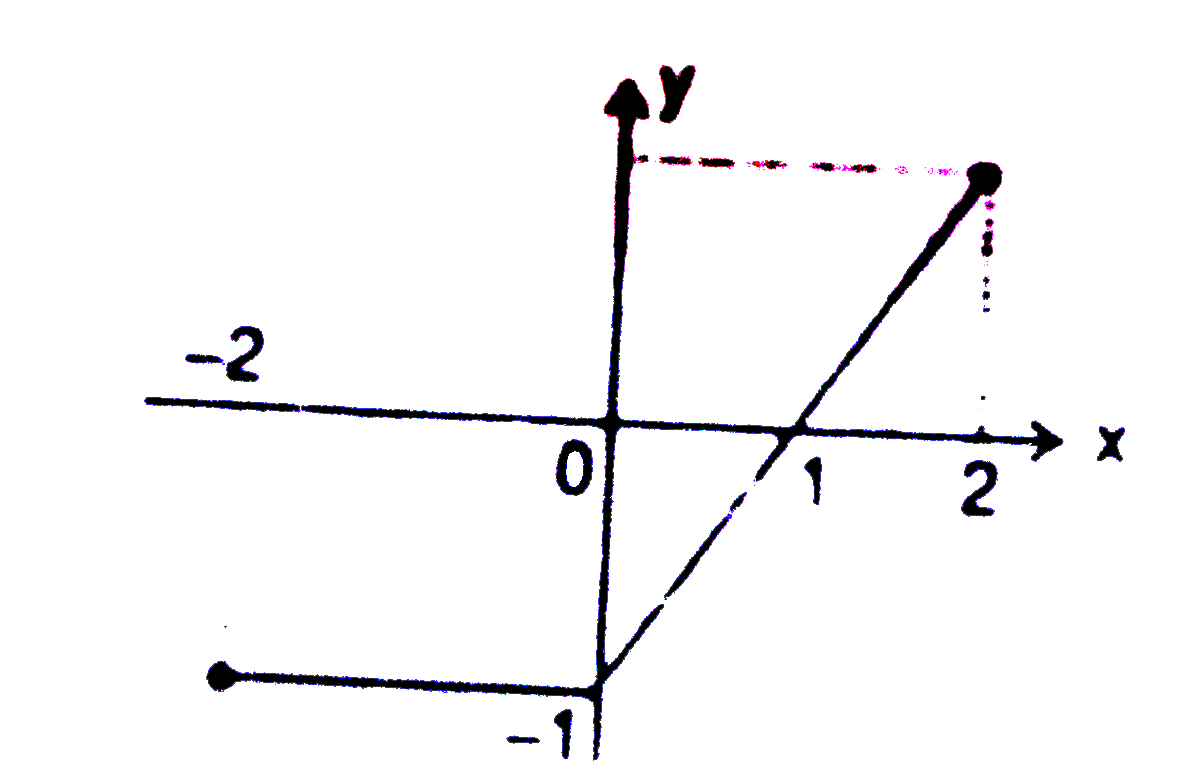The folloiwng figure shows the graph of a continuous function y = f(x) on the interval [1, 3]. The points A, B, C have coordinates (1,1), (3,2),(2,3), respectively , and the lines L1andL2 are parrallel, with L1 being tangent to the curve at C. If the area under the graph of y = f(x) from x = 1 to x = 3 is 4 square units, then the area of the shaded region is
![The folloiwng figure shows the graph of a continuous function y = f(x) on the interval [1, 3]. The points A, B, C have coordinates (1,1), (3,2),(2,3), respectively , and the lines L(1) and L(2) are parrallel, with L(1) being tangent to the curve at C. If the area under the graph of y = f(x) from x = 1 to x = 3 is 4 square units, then the area of the shaded region is](https://d10lpgp6xz60nq.cloudfront.net/physics_images/CEN_CAL_DPP_9_2_E01_501_Q01.png)
1
2
3
4
The correct Answer is:B

Equation of L2:y−1=2−13−1(x−1)
or 2y−2=x−1
2y−x=1
⇒ Slope of L2=1/2.
Equation of L1=y−3=12(x−2)
or 2y−x=4
∴ D(1,52)andE(3,72)
Area under f(x) = 4
∴ Shaded area = Area of trapezium DEFG - Area under f(x)
=12(52+72)×2−4
=6−4=2
Topper's Solved these Questions
- BOOK - CENGAGE ENGLISHCHAPTER - AREAEXERCISE - Multiple Correct Answer Type3videos
AREA
- BOOK - CENGAGE ENGLISHCHAPTER - AREAEXERCISE - Comprehension Type2videos
AREA
- BOOK - CENGAGE ENGLISHCHAPTER - AREAEXERCISE - Archives10videos
AREA
- BOOK - CENGAGE ENGLISHCHAPTER - APPLICATIONS OF DERIVATIVESEXERCISE - Comprehension Type5videos
APPLICATIONS OF DERIVATIVES
- BOOK - CENGAGE ENGLISHCHAPTER - BINOMIAL THEOREMEXERCISE - Matrix4videos
BINOMIAL THEOREM
Similar Questions
Knowledge Check
- Question 1 - Select One
The point (2,−1) on the graph y=f(x) is shifted to which point on the graph of y=f(x+2)?
A(4,1)B(4,−1)C(0,−1)D(0,−3)
If the graph of the function y=f(x) is as shown :

The graph of y=1/2(|f(x)|−f(x)) isView SolutionThe line y=mx+1 is a tangent to the curve y2=4x if the value of m is(A) 1 (B) 2(C) 3(D) 1/2.
View SolutionIf graph of the function y=f(x) is continuous and passes through point (3, 1) then limx→3loge(3f(x)−2)2(1−f(x)) is equal
View SolutionIf the lines L1 and L2 are tangents to 4x2−4x−24y+49=0 and are normals for x2+y2=72, then find the slopes of L1 and L2.
View SolutionTwo lines L1 and L2 of slops 1 are tangents to y2=4x and x2+2y2=4 respectively, such that the distance d units between L1andL2 is minimum, then the value of d is equal to
View SolutionThe interval in which the function y=f(x)=x−1x2−3x+3 transforms the real line is
View SolutionThe interval in which the function y=f(x)=x−1x2−3x+3 transforms the real line is
View Solution

